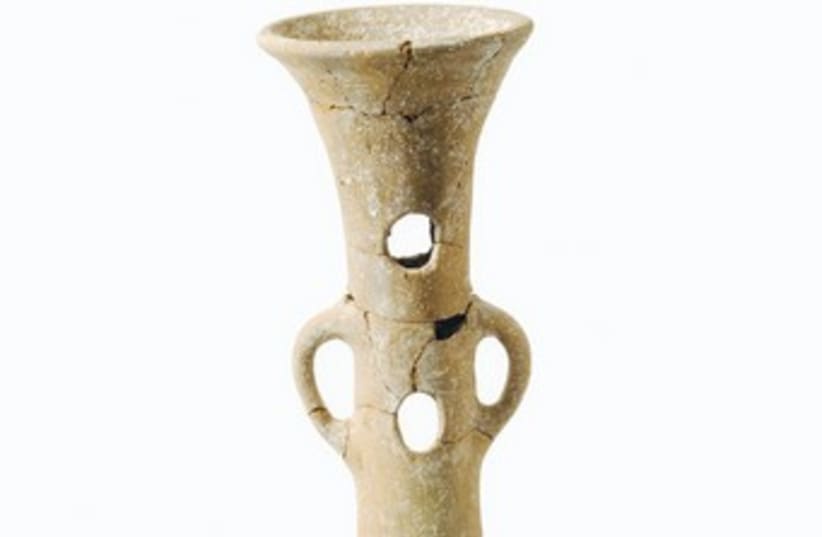A complete inkwell dating to the end of the Second Temple period was found at the Horvat Brachot excavation site in Gush Etzion during a dig done by the Israeli Civil Administration's Archeology Unit in collaboration with the Herzog College.
The inkwell is made of clay and consists of a flat base and a round handle. It has a narrow opening through which the ink and pen were inserted.
The finding is relatively rare, as inkwells and artifacts similar to them have only been found in several excavation sites across the country.
According to The Jewish Press, the inkwell probably belonged to a writer or merchant who lived in the area in the years leading up to the destruction of the Temple in Jerusalem.
The finding is special not only because of the artifact discovered, but also because of what it may mean. A popular hypothesis in academia is that literacy was fairly common among the Jewish population in the Land of Israel during the Second Temple period, but the evidence to support it is lacking.
Hanania Hizami, Archeology Staff Officer at the Civil Administration said the finding "joins a wealth of finds that were discovered by the Archeological Unit in the Civil Administration and constitute historical and national cultural assets."
"I welcome the fact that we continue to uncover various archeological finds that contribute greatly to the study of Jewish history in the area."
The question of literacy among the ancient Jewish population has fascinated researchers for a while now.
Recently, researchers from Tel Aviv University analyzed 18 ancient texts from the Tel Arad military post dating back to around 600 BCE, in an attempt to understand how the literacy of the population would have impacted biblical texts such as the Book of Kings.
In an article titled “Forensic document examination and algorithmic handwriting analysis of Judahite biblical period inscriptions reveal significant literacy level,” published in the PLOS ONE journal on September 9, the authors concluded that the texts were written by no fewer than 12 authors, which suggests that many of the inhabitants of the Kingdom of Judah during that period were able to read and write, and that literacy was not reserved for a handful of royal scribes.The recent finding of an inkwell in a Jewish historical settlement, supports the idea of the Jewish people really being the "People of the Book," even during the biblical era, and may hold more answers after researches properly analyze it.
The Civil Administration's Archeology Unit describes the sites in the West Bank as “among the most significant sites within the history and culture of the region and the world at large” and as the “cornerstones of Jewish, Christian, and Islamic history,” according to its website.
The Civil Administration is the Israeli governing body that operates in the West Bank. It's in change of Israeli and Palestinian civilian life in Area C.Hannah Brown contributed to this article.
